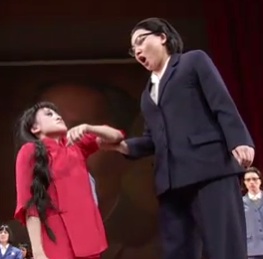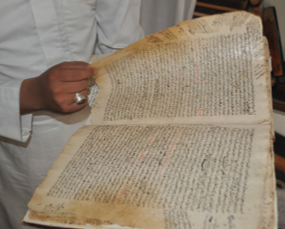At the UO, as in most Chinese language programs, students studying spoken Chinese are most likely studying Mandarin, otherwise known as Standard Chinese, the official language of the People’s Republic of China and of Taiwan. “Chinese” in a more general way refers to a branch of the Sino-Tibetan family of languages. Other varieties of spoken Chinese include Wu, Cantonese and Min, each of which is spoken by millions, though Mandarin is by far the most commonly spoken variety in China and is one of the six official languages of the United Nations.
All varieties of Chinese are tonal—it is the pitch (highness or lowness of a sound) with which a word is spoken that fixes meaning. To untrained ears, tones are often difficult to distinguish and pronounce. Such complexity is amplified by the importance of word order and context. Even including tones, there are only some 1,700 syllables in Mandarin, compared to some 8,000 in English. The meaning of many spoken words in Chinese, therefore, depends on the context in which they are used. A syllable is composed of a vowel, a consonant and the tone.
But learning to speak Chinese is barely one-third of a student’s battle. Unlike phonetic languages that allow practitioners to guess at pronunciation of unfamiliar written words by sounding out written syllables, spoken Chinese and written Chinese have no obvious link. “You just have to remember the character and what sound goes with it,” said Fengjun Mao, who teaches second-year Chinese.
This is no small chore given that the largest formal Chinese dictionaries include more than 50,000 characters, though the majority of these are archaic and rarely, if ever, used. Language instructors at the UO estimate knowledge of some 6,000 characters is required for reading fluency at an advanced level—which is generically estimated by a person’s ability to read a newspaper. About 2,000 characters comprise the most common set. In China, if you know 800 characters or fewer, you are considered illiterate. Instructors at the UO aim to teach students approximately 500 characters over the course of each year of study.
Making the process even more complex is that there are two forms of written Chinese: traditional characters and simplified characters. Though the two are related—simplified characters were developed in the 1950s with reference to traditional characters—they are different enough that most practitioners generally develop a preference for one or the other. Traditional characters are most popular in Taiwan and Hong Kong, while mainland China generally uses simplified.
— Patricia Hickson




 Watch
Watch  Watch excerpts from the opera, coming soon to Eugene.
Watch excerpts from the opera, coming soon to Eugene. 

 Three’s a charm for a living memorial.
Three’s a charm for a living memorial.